(I dedicate my answer to @tlfong01 in gratitude for his responsiveness.)
This is a typical example of how a simple idea can be presented in an insanely complex way to become a scientific article...
This kind of negative resistance is named "negative differential resistance" (NDR). Actually, it is "over dynamic resistance" (I have revealed the truth about it in https://en.wikibooks.org/wiki/Circuit_Idea/Negative_Differential_Resistance).
Devices such a tunnel diode possess such an N-shaped IV curve. Here it is artificially obtained. The trick to create the negative resistance region is simple - driving a MOSFET (Q3) both from the side of the drain and gate. Thus, when Vd increases, Q3 is forced (from the side of the gate) to increase enough its dynamic "resistance" so that Id decreases despite the fact that Vd increases.
This can be explained by Ohm's law written in a form of Id = Vd/Rds where Rds is the dynamic "resistance" between the Q3 drain and source. In this expression, when the numerator (Vd) increases, the numerator (Rds) also increases... and to an even greater extent. So, their ratio (Id) decreases.
In other words, the trick is that, in Ohm's law, the current is a function of two variables - both voltage and resistance... and thus its direction of change is reversed.
It only remains to answer the question, "What is the point of all this?"
